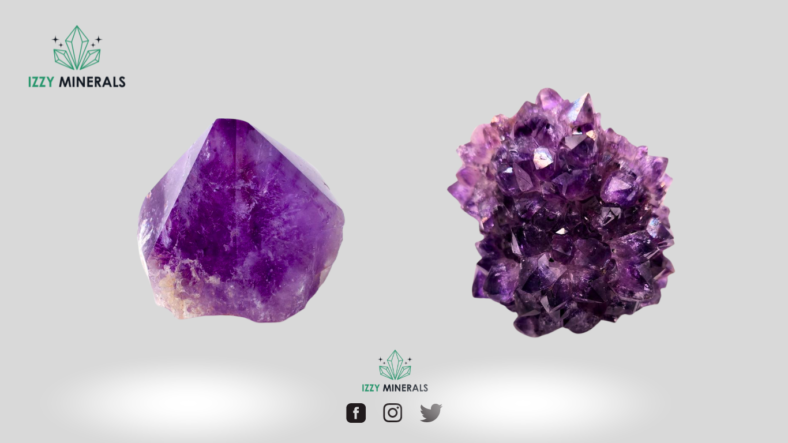Amethyst, with its captivating purple hues, has been prized for centuries as a gemstone of beauty and mystique. But what exactly gives this quartz variety its alluring color? In this comprehensive blog post, we’ll delve into the fascinating world of amethyst, exploring its chemical composition, coloration factors, historical significance, and more.
6100 Grams Natural Amethyst Geode Quartz Cluster Crystal Specimen Mierals
Chemical Composition of Amethyst

Amethyst belongs to the quartz family and shares the same chemical formula as quartz: SiO₂. Each silicon atom bonds to four oxygen atoms in a tetrahedral arrangement. But it’s the trace elements within this crystal lattice that lend amethyst its distinctive purple hue. Iron and manganese play a crucial role in creating the gem’s enchanting color.
17920 grams Natural Amethyst Geode Quartz Cluster Crystal Specimen Minerals
Presence of Iron Impurities
Iron, in particular, is the primary coloring agent in amethyst. When iron impurities exist in the trivalent state, they result in the characteristic violet shades that amethyst is celebrated for. These impurities interact with the crystal lattice, infusing the gemstone with its mesmerizing color.
Factors Affecting Amethyst Coloration
The exact conditions for amethyst formation are still under study, but two prevailing theories stand out:
Hydrothermal Veins: Amethyst often forms in hydrothermal veins—fractures in the Earth’s crust filled with hot mineral-rich fluids. These fluids contain dissolved silica (the main component of quartz) and trace amounts of iron. As they cool and solidify, quartz crystals develop the purple coloration.
Secondary Deposition: In this process, amethyst can form in cavities and fractures of rocks due to groundwater precipitation. Water carrying dissolved minerals reacts with existing minerals, leading to crystal growth and the creation of amethyst geodes.
29.4 kg Natural Amethyst Geode Quartz Cluster Crystal Specimen
Variations in Amethyst Color
Amethyst’s purple spectrum ranges from cool bluish tones to reddish purples akin to raspberries. The gemstone’s hexagonal crystal structure and Mohs hardness of 7 make it ideal for jewelry.
Historical Significance of Amethyst Color
The name “amethyst” derives from the Greek word “amethystos,” meaning “not drunken.” Ancient Greeks believed amethyst could prevent intoxication. Today, it remains the birthstone for February and symbolizes calmness, stability, and mental clarity.
FAQs
Where can high-quality amethyst be found?
High-quality amethyst deposits exist in Russia, Sri Lanka, Peru, Uruguay, and the Far East.
What is the perfect classification of amethyst?
The “Ultra Siberian” variety boasts a predominant purple hue with secondary blue and red tones.
How does amethyst get its color?
Trivalent iron substitution, along with other trace elements, creates the gem’s violet magic.
Conclusion
Next time you admire an amethyst, remember the intricate dance of trace elements that imbue it with its magical purple allure. From hydrothermal veins to secondary deposition, amethyst’s journey through Earth’s crust is as captivating as the gem itself.







